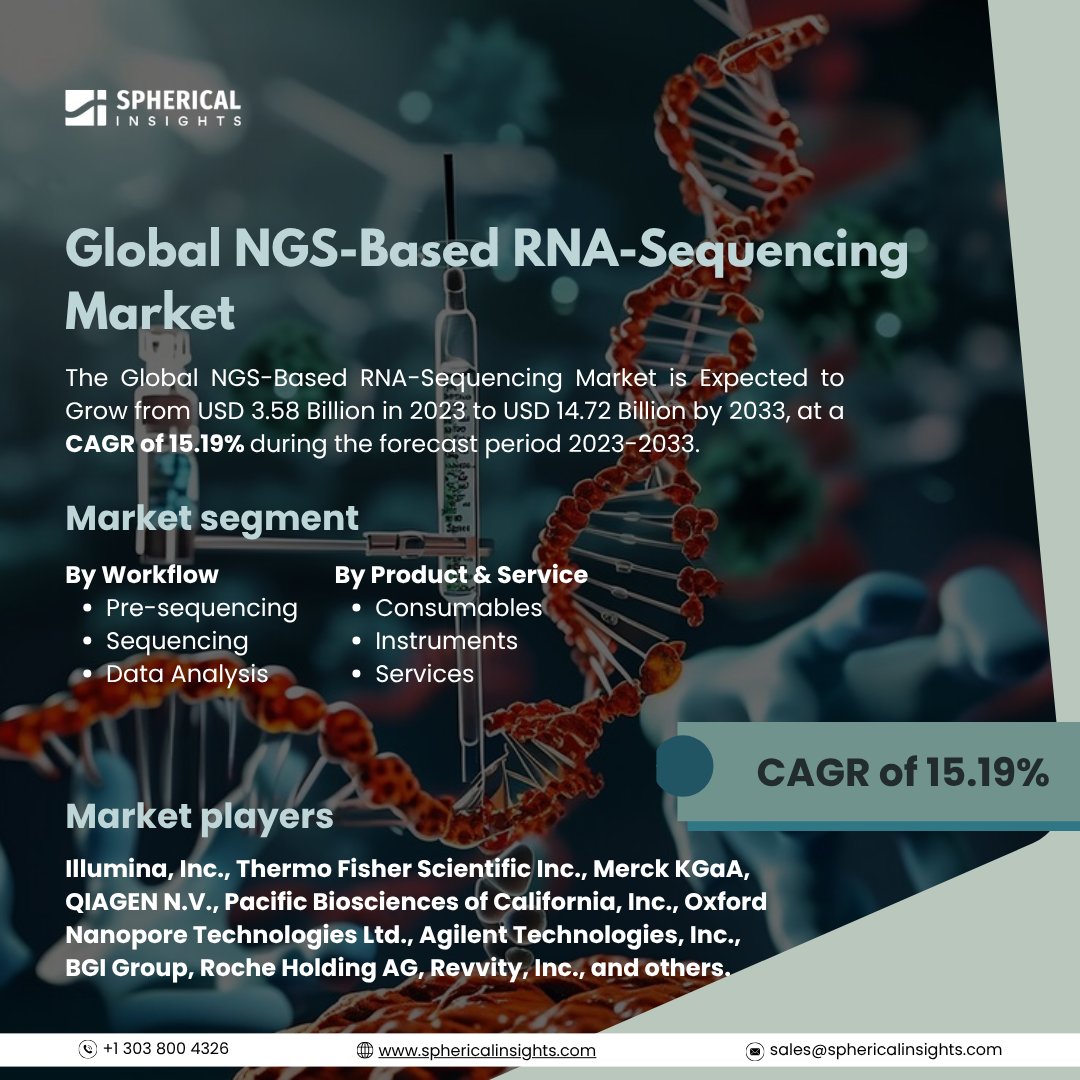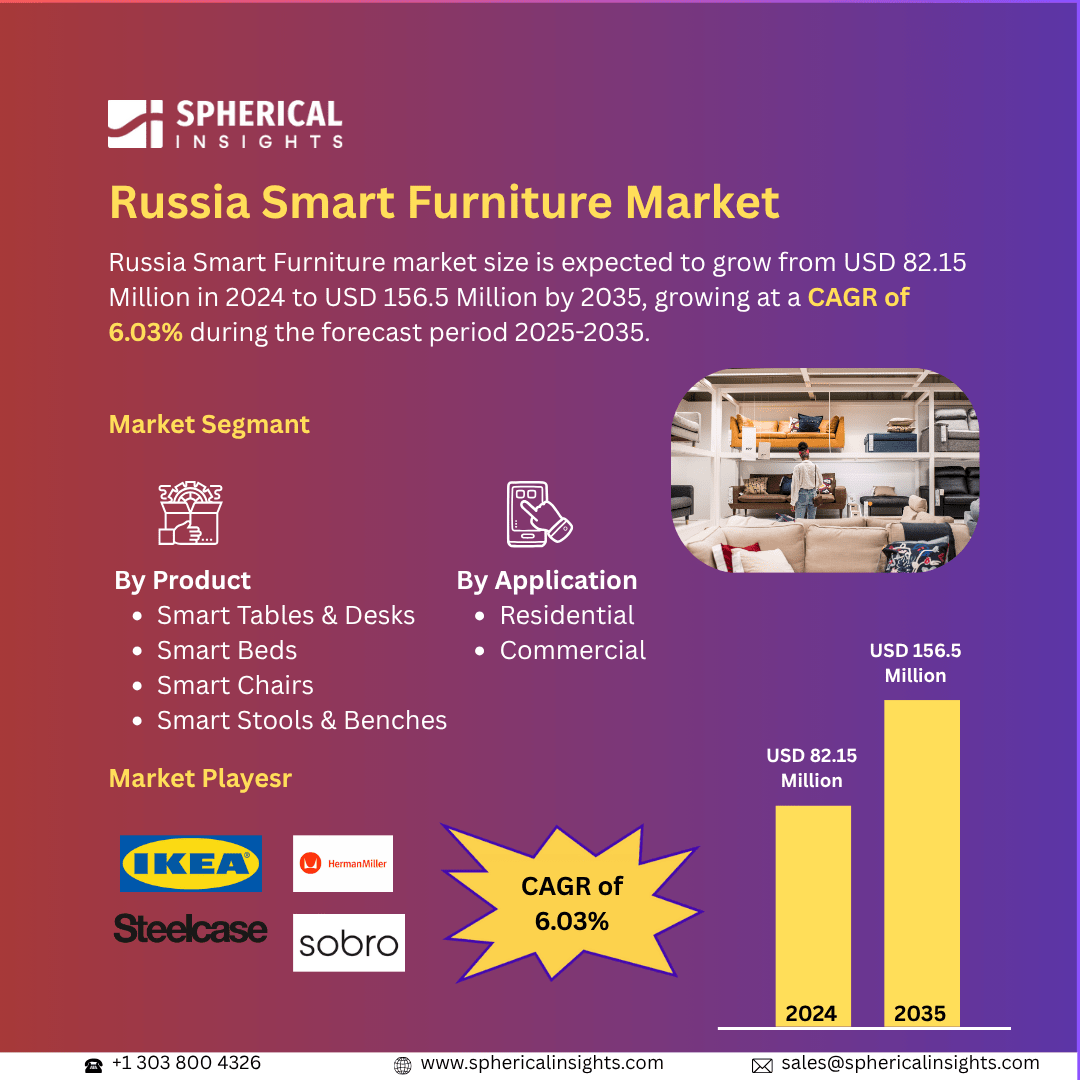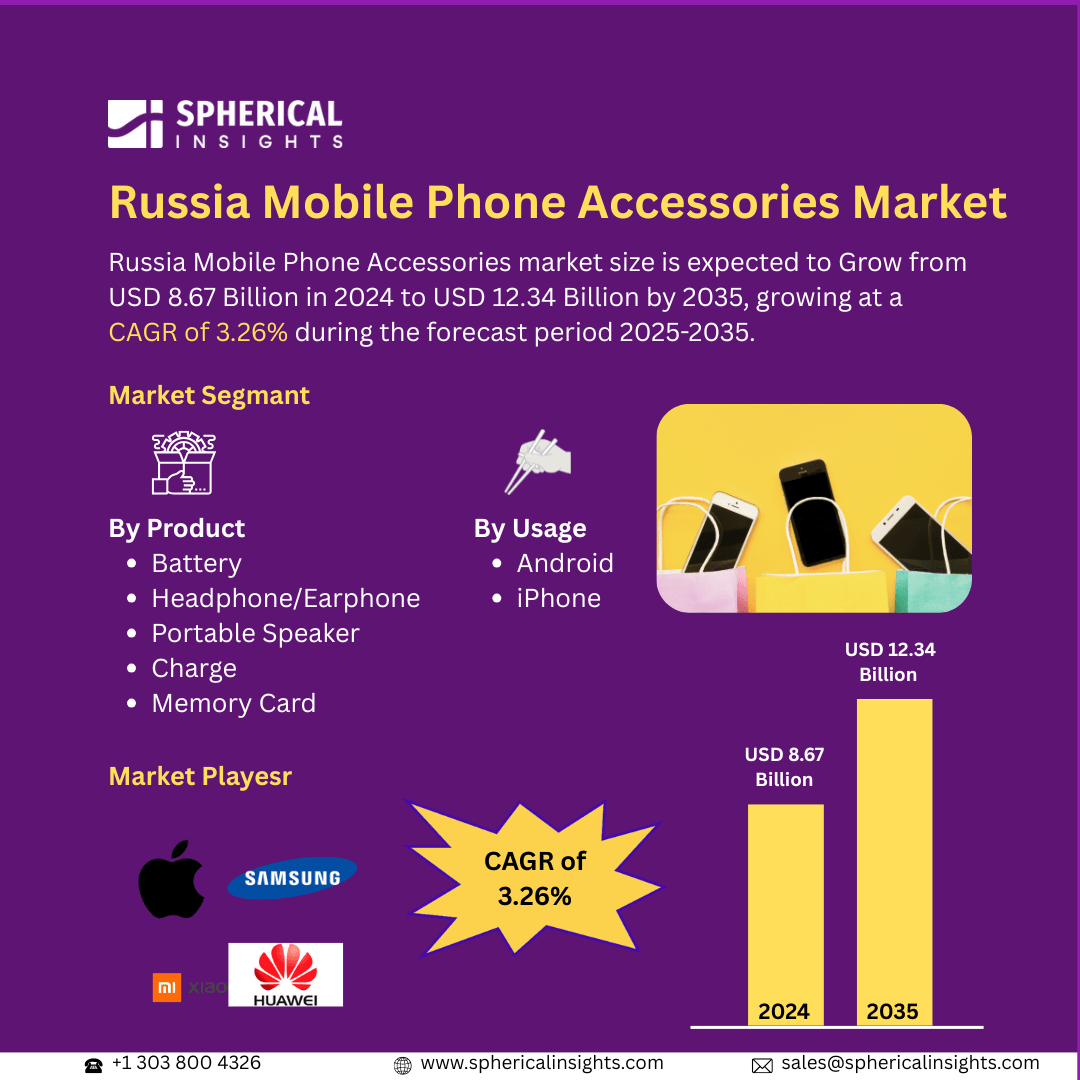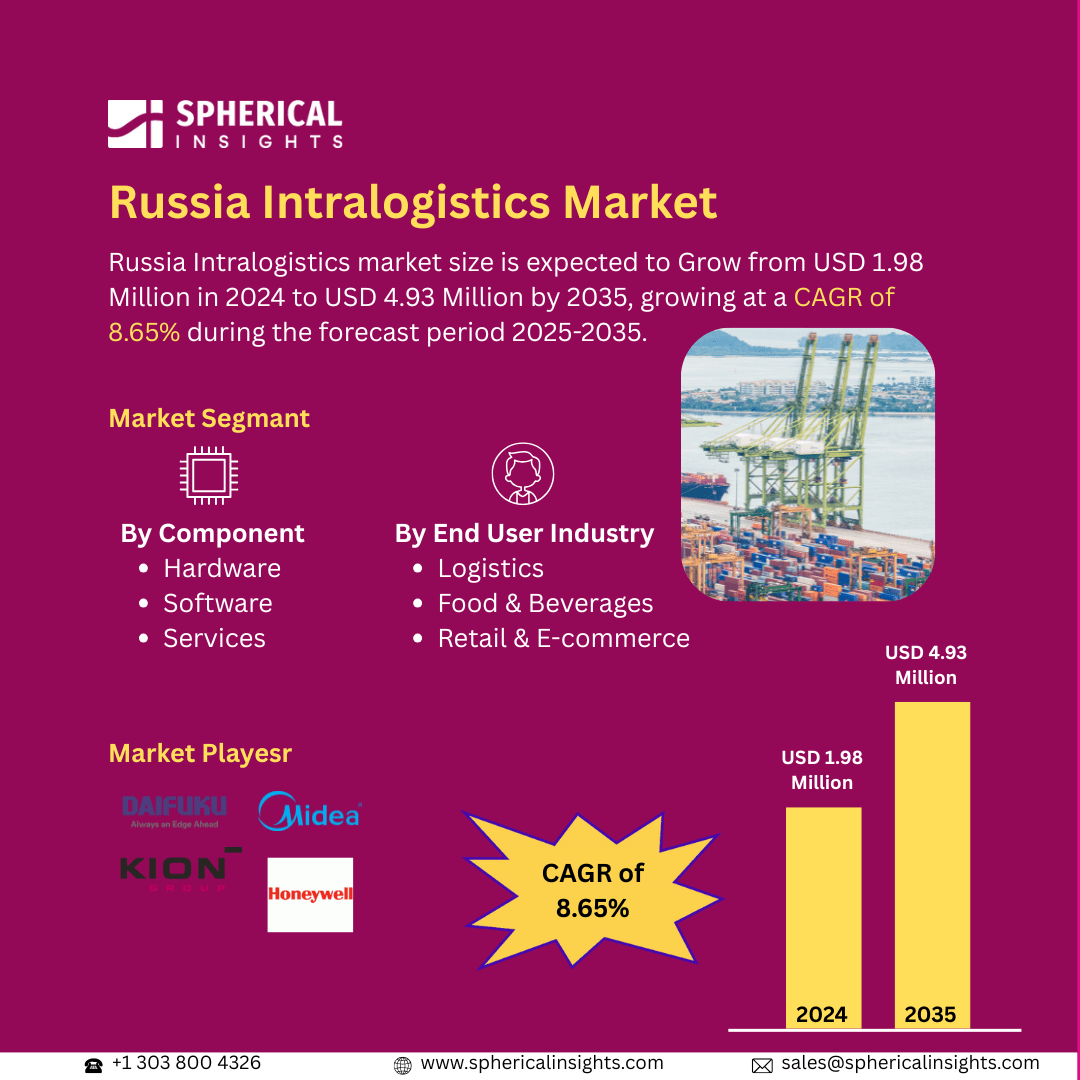Global NGS-Based RNA-Sequencing Market Size To Exceed USD 14.72 Billion by 2033
According to a research report published by Spherical Insights & Consulting, The Global NGS-Based RNA-Sequencing Market Size is Expected to Grow from USD 3.58 Billion in 2023 to USD 14.72 Billion by 2033, at a CAGR of 15.19% during the forecast period 2023-2033.
Browse 210 Market Data Tables And 45 Figures Spread Through 190 Pages and In-Depth TOC On The Global NGS-Based RNA-Sequencing Market Size, Share, and COVID-19 Impact Analysis, By Product & Service (Consumables, Instruments and Services), By Workflow (Pre-sequencing, Sequencing and Data Analysis) and By Region (North America, Europe, Asia-Pacific, Latin America, Middle East, and Africa), Analysis and Forecast 2023 - 2033.
The global market for goods and services associated with RNA sequencing through next-generation sequencing (NGS) technologies is known as the NGS-based RNA-sequencing market. For uses like gene expression analysis, biomarker discovery, and disease diagnosis, this comprises tools, materials, software, and services for studying RNA molecules, such as mRNA, microRNAs, and other RNA types. NGS-based RNA sequencing (RNA-Seq) is a high-throughput method that analyzes a sample's RNA content using next-generation sequencing (NGS) to uncover patterns of gene expression and provide information about the transcriptome. The presence and sequence of RNA molecules, such as mRNA, non-coding RNA, and other RNA species, can be measured by researchers using this technique. Furthermore, the growing demand for transcriptome profiling, the growing use of precision medicine, and developments in high-throughput sequencing technologies are driving the market's expansion. Growing uses in drug development, disease diagnostics, and biomarker discovery are additional motivators. The market's growth across clinical and research domains is further accelerated by declining sequencing costs and rising genomic research investments. However, among the difficulties facing the NGS-based RNA-sequencing market are the intricacies of data storage and interpretation, the high expense of tools and services, and the requirement for highly qualified staff and cutting-edge data analysis tools.
The consumables segment dominated the largest share in 2023 and is anticipated to grow at a significant CAGR during the forecast period.
Based on the product & service, the global NGS-based RNA-sequencing market is divided into consumables, instruments, and services. Among these, the consumables segment dominated the largest share in 2023 and is anticipated to grow at a significant CAGR during the forecast period. This is explained by the constant need for consumables, kits, and reagents needed at each step of the sequencing process. High-quality, dependable consumables are now much more necessary as clinical applications and research activities grow. Further propelling segment growth and highlighting its crucial role in the entire NGS ecosystem are developments in sequencing chemistry and the introduction of specialized kits for targeted RNA analysis.
The sequencing segment held the highest share in 2023 and is anticipated to grow at a significant CAGR during the forecast period.
Based on the workflow, the global NGS-based RNA-sequencing market is divided into pre-sequencing, sequencing, and data analysis. Among these, the sequencing segment held the highest share in 2023 and is anticipated to grow at a significant CAGR during the forecast period. This is ascribed to the growing use of high-throughput sequencing technologies, which offer quick and thorough insights into transcriptomic profiles and gene expression. Improvements in sequencing platforms that provide increased accuracy, scalability, and cost-effectiveness are also driving the growth.
North America is anticipated to hold the highest share of the global NGS-based RNA-sequencing market over the projected period.
North America is anticipated to hold the highest share of the global NGS-based RNA-sequencing market over the projected period. This is because of robust research efforts, significant investments in genomics, and sophisticated healthcare infrastructure. The strong biotechnology and pharmaceutical industries in the area, along with the strong demand for personalized medicine, further fueled market expansion. The use of RNA-sequencing technologies in clinical and research settings is also being fueled by the existence of important industry participants and government backing for genomic research and innovation in North America.
Asia Pacific is estimated to grow at the fastest CAGR in the global NGS-based RNA-sequencing market during the forecast period. This is explained by growing genomic research projects, more investments in healthcare infrastructure, and growing awareness of precision medicine. Government support and expanding biotech industries are driving the rapid adoption of NGS technologies in nations like China, India, and Japan. Regional market growth is further accelerated by the rise in population-based studies and the need for sophisticated diagnostics.
Company Profiling
Major vendors in the global NGS-based RNA-sequencing market are Illumina, Inc., Thermo Fisher Scientific Inc., Merck KGaA, QIAGEN N.V., Pacific Biosciences of California, Inc., Oxford Nanopore Technologies Ltd., Agilent Technologies, Inc., BGI Group, Roche Holding AG, Revvity, Inc., and others.
Key Target Audience
- Market Players
- Investors
- End-users
- Government Authorities
- Consulting and Research Firm
- Venture capitalists
- Value-Added Resellers (VARs)
Market Segment
This study forecasts revenue at the global, regional, and country levels from 2023 to 2033. Spherical Insights has segmented the global NGS-based RNA-sequencing market based on the below-mentioned segments:
Global NGS-Based RNA-Sequencing Market, By Product & Service
- Consumables
- Instruments
- Services
Global NGS-Based RNA-Sequencing Market, By Workflow
- Pre-sequencing
- Sequencing
- Data Analysis
Global NGS-Based RNA-Sequencing Market, By Regional
- North America
- Europe
- Germany
- UK
- France
- Italy
- Spain
- Russia
- Rest of Europe
- Asia Pacific
- China
- Japan
- India
- South Korea
- Australia
- Rest of Asia Pacific
- South America
- Brazil
- Argentina
- Rest of South America
- Middle East & Africa
- UAE
- Saudi Arabia
- Qatar
- South Africa
- Rest of the Middle East & Africa



